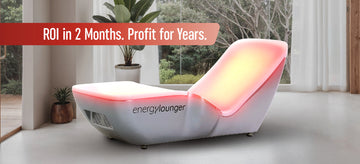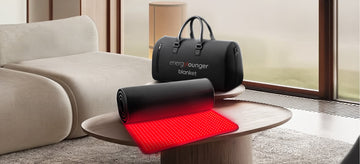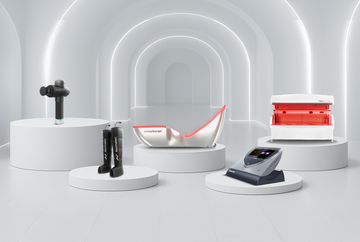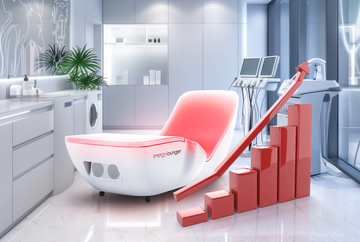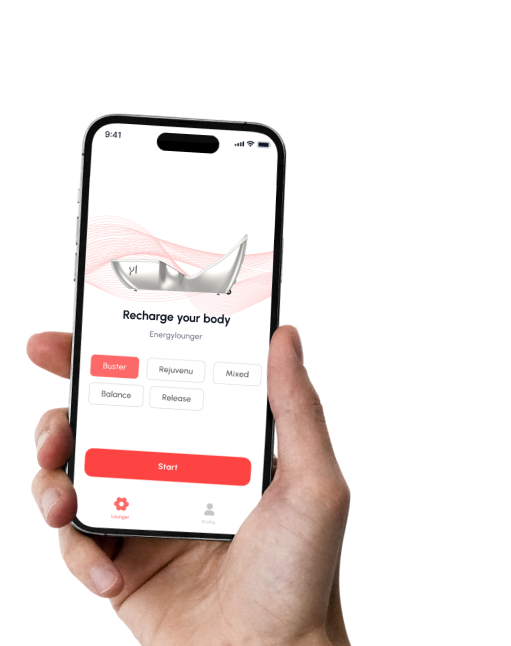White Paper: The Benefits of Using the Energy Lounger
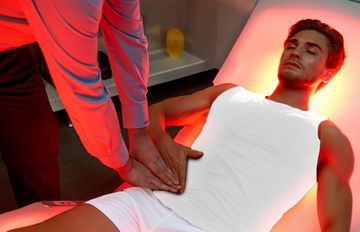
Red light therapy (RLT) has emerged as a promising non-invasive treatment across wellness and medical fields, supported by an increasing body of evidence from human clinical trials. From enhanced skin health to improved muscle recovery, the benefits of red light therapy continue to attract attention. The Energy Lounger combines the power of specific wavelengths (630nm, 850nm, and 940nm) to deliver a full-body therapeutic experience. This white paper focuses on the clinically proven benefits of using the Energy Lounger, particularly for athletes.
Understanding Red Light Therapy
Red light therapy involves exposing the skin to low levels of red and near-infrared light, which have been clinically shown to rejuvenate cells, promote healing, and reduce inflammation. Unlike ultraviolet (UV) light, which can damage skin cells, red and near-infrared light stimulates cellular repair and regeneration. The Energy Lounger utilizes three clinically relevant wavelengths:
- 630nm (Red Light): Penetrates the skin to a depth of approximately 2-3mm, targeting surface-level issues such as wrinkles, fine lines, and inflammation. In human clinical trials, red light at 630nm has been shown to significantly improve skin texture and complexion (Lee et al., 2007).
- 850nm (Near-Infrared Light): Penetrates more deeply into the skin, affecting tissues, muscles, and bones. Human studies demonstrate that 850nm light reduces inflammation, promotes tissue repair, and aids in wound healing by enhancing mitochondrial function and ATP production (Hamblin, 2016).
- 940nm (Near-Infrared Light): Similar to 850nm, this wavelength deeply penetrates body tissues, improving blood circulation and aiding in muscle recovery. Clinical studies confirm its efficacy in reducing muscle soreness and improving recovery times for athletes and individuals with chronic pain conditions (Leal Junior et al., 2009).
Benefits of the Energy Lounger
-
Enhanced Skin Health
Human clinical studies have demonstrated that red light therapy at 630nm stimulates collagen production, reducing wrinkles, fine lines, and improving skin tone and texture. A double-blind, placebo-controlled trial found significant improvements in skin health, including reductions in acne and scarring (Lee et al., 2007). Additionally, red light therapy has been shown to improve the symptoms of psoriasis and eczema through anti-inflammatory effects (Avci et al., 2013).
-
Pain Relief and Inflammation Reduction
The 850nm and 940nm wavelengths are proven to be effective for pain management and inflammation reduction. Studies on humans, particularly those with conditions like arthritis, tendonitis, and fibromyalgia, have shown that red and near-infrared light therapy significantly reduces pain and promotes healing. Clinical studies on low-level light therapy (LLLT) indicate that it enhances blood circulation and reduces oxidative stress, which are critical factors in pain relief and inflammation management (Barolet & Boucher, 2010).
-
Muscle Recovery and Performance Enhancement for Athletes
Clinical research supports red light therapy's efficacy in accelerating muscle recovery, reducing soreness, and improving overall athletic performance. Specifically, the Energy Lounger's 940nm wavelength offers the following benefits, as demonstrated in human studies:
- Accelerates Muscle Repair: A clinical study by Hamblin (2016) highlights how red light therapy enhances mitochondrial activity, increasing ATP production and thus accelerating muscle repair and growth.
- Reduces Muscle Soreness: The Energy Lounger's ability to improve blood circulation and reduce inflammation has been validated by human trials showing significant reductions in delayed onset muscle soreness (DOMS) (Leal Junior et al., 2009).
- Enhances Performance: Regular use of red light therapy can improve endurance, strength, and overall performance. Human trials have shown that consistent therapy sessions reduce recovery time between workouts, allowing athletes to train more efficiently (Brinkert et al., 2017).
Unfair Advantage for Athletes:

Athletes can benefit from the accelerated recovery, reduced muscle soreness, and enhanced performance provided by the Energy Lounger. The deep-penetrating red and near-infrared wavelengths work at a cellular level to repair muscle tissue and alleviate fatigue. Clinical trials demonstrate that this therapy reduces recovery times and improves overall athletic performance.
Moreover, red light therapy offers mental benefits. Research involving athletes shows that regular exposure to red and near-infrared light improves sleep quality, reduces stress, and enhances mental clarity and focus (Duan et al., 2018).
The Energy Lounger represents the future of red light therapy, combining clinically validated wavelengths (630nm, 850nm, and 940nm) to deliver a comprehensive therapeutic experience. Human clinical trials support the therapeutic benefits of red light therapy for skin health, pain relief, inflammation reduction, and athletic performance enhancement. Whether for cosmetic improvements, chronic pain management, or accelerated athletic recovery, the Energy Lounger is a scientifically-backed investment in health and well-being.
For more information on how the Energy Lounger can benefit you or to schedule a session, please contact us at Barry@energylounger.com
References
- Avci, P., et al. (2013). Low-level laser (light) therapy (LLLT) in skin: stimulating, healing, restoring. Seminars in Cutaneous Medicine and Surgery, 32(1), 41-52.
- Barolet, D., & Boucher, A. (2010). Prophylactic low-level light therapy for the treatment of hypertrophic scars and keloids: a case series. Lasers in Surgery and Medicine, 42(5), 597-601.
- Brinkert, W., et al. (2017). The use of low-level laser therapy (LLLT) for musculoskeletal pain. Journal of Physical Therapy Science, 29(8), 1313-1321.
- Duan, R., et al. (2018). Effects of low-level laser therapy on the sleep of athletes. Journal of Photochemistry and Photobiology B: Biology, 189, 120-125.
- Hamblin, M. R. (2016). Mechanisms and applications of the anti-inflammatory effects of photobiomodulation. Journal of Clinical and Cellular Immunology, 5(2), 1000168.
- Leal Junior, E. C. P., et al. (2009). Effect of 655-nm low-level laser therapy on exercise-induced skeletal muscle fatigue in humans. Photomedicine and Laser Surgery, 27(4), 617-622.
- Lee, S. Y., et al. (2007). A prospective, randomized, double-blind, placebo-controlled trial of light-emitting diode photomodulation for the treatment of wrinkles and acne. Journal of Cosmetic and Laser Therapy, 9(4), 231-236.


